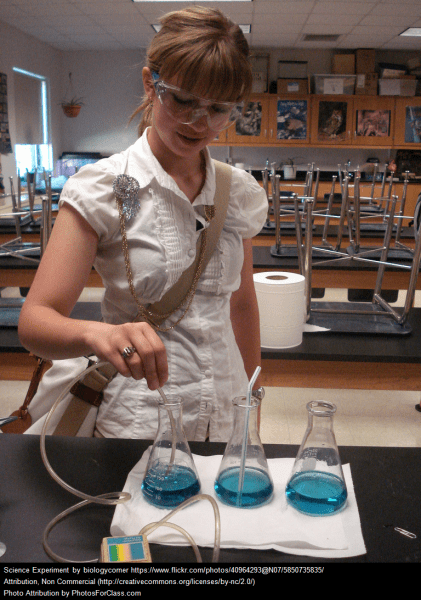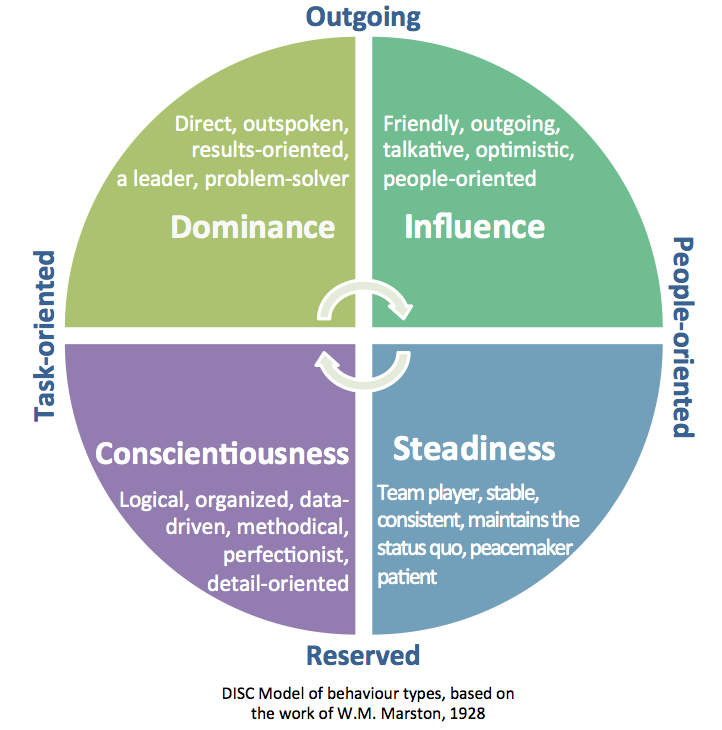How do you motivate your students to learn more about science? Tell us below or tweet @learnquebec.
Imagine that the bell rings to end your science class and you hear groans from your students. “Do we have to leave?” “This is so great” “Can’t we just stay here?” Well maybe that happens to you from time to time, but in my teaching experience, I admit that it was a rare occurrence. If you think about the activities that interest you and fully absorb your attention – skiing in deep powder, listening to your favourite music, reading that page-turner novel, playing with your granddaughter – why can’t a science activity produce a similar response?
The question of what makes students want to learn science has intrigued me throughout my educational career. It seems to me that learning about the natural world that surrounds us should be of intrinsic interest to everyone, and learning about it in school should be fascinating for all students. But this doesn’t seem to the case. Enrolment in high school optional science courses around the world is declining and students increasingly drop science courses as soon as they can. They find it difficult and boring and, surprisingly, they find it unrelated to their lives! In one study comparing the attitudes of students in different countries, Terry Lyons found that students frequently reported being turned off by “the transmissive pedagogy, decontextualized content, and unnecessary difficulty of school science.” (Lyons, 2006). In other words, they say it’s too hard, doesn’t involve them and is meaningless to them.
Intrinsic Motivation – Flow Theory:
We would all like our students to be intrinsically motivated to learn science – in other words to want to do science for its own sake and have a genuine interest in it. Mihaly Csikszentmihalyi, a Hungarian/Croatian psychologist developed the theory of Flow – an explanation of intrinsic motivation. A highly influential University of Chicago professor, his ideas have influenced people from President Bill Clinton to the winning Super Bowl coach of the 1993 Dallas Cowboys. Flow describes people’s state of “complete absorption in the present moment” when they are intrinsically motivated to engage in an activity (Csikszentmihalyi, 2014). They are in control of their actions and pursue the activity for its own sake, not in pursuit of a reward or to avoid a punishment. Some of the conditions for Flow are: “perceived challenges, or opportunities for action, that stretch but do not overmatch existing skills”, “clear proximal goals and immediate feedback about the progress being made.”( p. 195). People “in Flow” would be observed to be focused on an active task, unselfconscious and in control. They may comment about the surprisingly fast passage of time while doing the activity. Daniel Pink in his book Drive: The surprising truth about what motivates us called this Type I (I for Intrinsic) behavior. By this he refers to intrinsic motivation characterized by autonomy (control over the project), mastery (the desire to continually improve it), and purpose (doing something that has personal meaning).
Extrinsic Motivation
The opposite of Flow or Type I behavior is motivation by punishment and reward, often referred to as extrinsic behavior. Though this is a common practice in education, this behavior more often undermines motivation and engagement on the part of students and tends to reduce learning and understanding (Csikszentmihalyi & Nakamura, 2005; Kohn, 1999; Pink, 2011). Alfie Kohn in Punished by Rewards, argues that using rewards – points, stickers, extra play time, etc – to motivate students is just as damaging to learning as imposing punishments – detentions, loss of points, reprimands, etc. As soon as the reward or punishment is removed, he points out, the motivation for doing the activity disappears. Corroborating this, in an meta-analysis of 128 studies, Deci, Koestner, & Ryan found that rewards of all types significantly undermined intrinsic motivation (Deci, Koestner, & Ryan, 1999).
So how do we get our students intrinsically motivated to learn science? The research discussed above would indicate that the project or activity has to have the following characteristics:
- a clear purpose.
- personal meaning to students.
- some degree of student control over it.
- an appropriate level of challenge – difficult enough to keep them interested, not too challenging to create frustration, and not too easy to bore them.
- continuous and immediate feedback.
Skilled science teachers learn by their own experience, workshops with other professionals, and discussions with colleagues. They struggle with balancing their desire to intrinsically motivate their students, with the requirement to cover the concepts needed to meet the requirements of the curriculum. I’d love to hear how you do this with your students.
References:
Csikszentmihalyi, M. (2014). Flow and the foundations of positive psychology: The collected works of Mihaly Csikszentmihalyi
Csikszentmihalyi, M., & Nakamura, J. (2005). Flow Theory and research. In C. R. Snyder & S. J. Lopez (Eds.), Oxford Handbook of Positive Psychology. New York: Oxford University Press.
Deci, E. L., Koestner, R., & Ryan, R. M. (1999). A meta-analytic review of experiments examining the effects of extrinsic rewards on intrinsic motivation. Psychological Bulletin, 125(6), 627-668.
Kohn, A. (1999). Punished by Rewards: The trouble with gold stars, incentive plans, A’s, praise and other bribes. Boston: Houghton Mifflin.
Lyons, T. (2006). Different Countries, Same Science Classes: Students’ experiences of school science in their own words. International Journal of Science Education, 28(6), 591-613.
Pink, D. H. (2011). Drive: The surprising truth about what motivates us. New York: Riverhead Books.







Motivation is what education is all about. I like the principles expressed on this Blog. Go Teachers!
Yes motivation is what good teachers strive for (and many with great success) in all subject areas.
Great points about how engagement in class material is super important to a student’s learning. As a science teacher, the trouble is sticking to the curriculum while constantly keeping them engaged. Students always seem interested in the topics that are “out in left field”. I would love to spend endless hours talking about the earth’s composition and the movie myths of it’s centre but it’s just not something there is time for! Love the list of characteristics that are necessary in a project. I will keep this in my back pocket for next lesson!
Speaking of student engagement…The Yukon has a unique approach to student engagement in science. In a program called the Yukon Experential Science 11 Program, students go through a range of field studies on real environmental issues for 25 to 30 days. This involves marine surveys. water quality assessments, caving – to name but a few. The full description can be found in an article by Kevin O’Connor and Robert Sharp in The European Scientific Journal December, 2013. They conclude by describing the lasting positive effects on student interest in pursuing science studies and better understanding of science among others.
Hi Ken
I just checked this out. These students are engaged.
Lorraine Krause
Thanks for your comments – from one who really knows how to engage her students in science learning! Yes, time pressure to “cover” the curriculum and prepare them for the exams is the enemy of inquiry.
Motivation in learning is a fascinating topic, and you have invoked several important authors and researchers who have examined that topic. Several years ago, I was involved with the McGill University Study on Student Engagement. The study was unique at the time in that it relied heavily on student input about the factors that engaged them in learning and school life. I am a huge Alfie Kohn fan, and as he would have predicted, it was challenging and relevant learning situations, opportunities for collaboration and supportive teachers that enhance student engagement. As teachers, we should all look at our lessons through the framework that you have proposed in the bullet points toward the end of the article. We all face time and curriculum constraints, but examining our lesson plans through that lens can only benefit our teaching, and our students’ learning.
I agree with you, Norm. I’d like to hear a little more about what the students told you in the Study on Student Engagement.
From an Ontario Phys ed educator
To me part of the intrinsic nature of learning comes from the ability of the students to be engaged in the whole experience of the class which may or may not on occasion include science
I tell my teachers that their primary goal is to create an atmosphere where the students feel totally safe – physically, emotionally and spiritually
The lesson can have a clear purpose, can have meaning and be appropriate yet if the environment in which the learning takes place is not to their liking the students will not learn as effectively
This is a real challenge for teachers. It means at times sharing part of themselves with their students, it means throwing away the plans of the day to discuss issues that are far more relevant to the students at that moment (teachable moments). Teachers need to take a few minutes to talk about real life issues in both the school and their city and the world in general.
If teachers set appropriate rules (only a few that are carved in stone), create a safe environment (much of it is good classroom management which unfortunately is a lost art) have a curriculum that is engaging then students will hopefully be more willing to learn partly because they like and respect that teacher more and feel comfortable in the classroom setting. I tell my teachers that their goal should be for the students to say “great we’re going to elliott’s class”.
It goes without saying that science teachers (like all teachers) must work hard to make their curriculum relevant. If they are unable to easily (in a sentence) explain when asked by the students why they are required to learn a particular subject/topic then perhaps they shouldn’t be learning it or it need not be taught.
Another thought. It is difficult to argue with Alfie Kohn about the pitfalls of extrinsic motivation.
However, in education, we are forced regularly to give our students a grade which is the ultimate extrinsic motivator – positive for some and quite a negative motivator for others. So why do we make things so difficult. Why can’t we give fairly high grades to most students and reward the very bright with intrinsically motivating challenges.
One of our complaints from students taking grade 12 and then grade 13 H&PE (Health and Physical Education) was that we were too strict with our marking – probably because we were feeling a bit self-conscious about the perceived lack of rigor in phys-ed – and what other subjects were saying about us. Students chose not to take the phys-ed courses and instead took courses like family studies where minimal effort resulted in a 90.
Not often do students receive a 90 in science with minimal effort.
We can’t just make science a breeze but perhaps it need not be made as rigorous as the brilliant scientists who teach it (and had a love for it) and the curriculum developers feel that it needs to be.
It took us a long time in phys-ed to realize that not all students enjoyed phys-ed class the way we as phys-ed teachers did. We changed our overall vision to one of creating lifelong learners who were able to make healthy lifestyle decisions – not be great athletes.
So how can science create a vision that has enough rigor and yet can be made attainable by most – not just a few. Perhaps have a science club or city wide classes for those exceptional students that are going to make science a lifetime commitment
Motivation along with persistence and aptitude are definitely keys to learning. Institutions across the planet are good at quoting pass rates and equating these with success, but what good is a pass if a student leaves high school unmotivated to learn more on their own?